Paul Simon, graceful poet and musical genius, gets his documentary due 'In Restless Dreams'
Paul Simon’s remarkable career, from poetic troubadour to architect of merging pop melodies with world beat, is ripe for mining.
But documentary filmmaker Alex Gibney didn’t want to reduce Simon’s accomplishments to a rote biopic. The goal, he says, was “to create a dreamscape of life both here and in the past. And they live simultaneously.”
The resulting film, “In Restless Dreams: The Music of Paul Simon,” is the result of a five-year odyssey that captures the sprawl of Simon’s seven decades in music through archival footage and unfettered access to current-day Simon, still vital and creative at 82.
The first of the two-part docuseries is now streaming on MGM+; the second is due at 9 EDT/PDT Sunday.
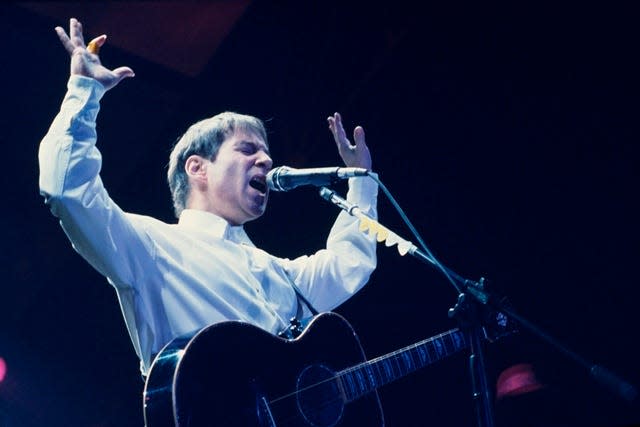
This is not the first time that Simon’s extraordinary career has been dissected. A 2018 biography, “Paul Simon: The Life,” written by renowned music reporter Robert Hilburn with Simon’s full participation, also detailed Simon’s history.
But in documentary form, seeing the magic of the 1981 Central Park concert when he reunited with Art Garfunkel; Simon’s solo return to that hallowed ground a decade later; the evolution of his landmark 1986 “Graceland” album; and Simon as he recorded last year’s “Seven Psalms” and struggled with hearing loss, is revelatory.
Gibney, who has directed award-winning documentaries about Scientology, Enron and the killing of an Afghan taxi driver, crafted the 3?-hour project with one of music’s headiest songbooks as its backbone.
“It’s not an information drop,” Gibney says. “It’s an emotional experience; of the moment, but full of memory.”
Here are some highlights from the film.
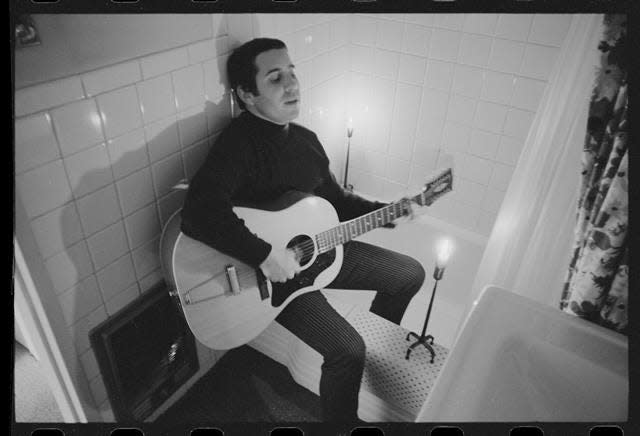
More: Star power of 'We are the World' remains unmatched: Inside the dramatic 1-night recording
Bathrooms and elevator shafts shaped Simon & Garfunkel hits
Much as the Beatles used unconventional recording methods – reverse guitar solos, double tracking of vocals – Simon and Garfunkel turned to some basic settings and rhythm makers for many of their timeless hits.
Producer Roy Halee's guidance was crucial on songs such as “Cecilia,” which features a tape loop of percussion created by banging pots and pans, and “The Boxer,” for which the drums were recorded at the bottom of an elevator shaft. (The song’s string section enjoyed a more stately recording setting: St. Paul’s Chapel at Columbia University.) On “The Only Living Boy in New York,” Simon and Garfunkel repaired to an echo chamber to record their harmonies.
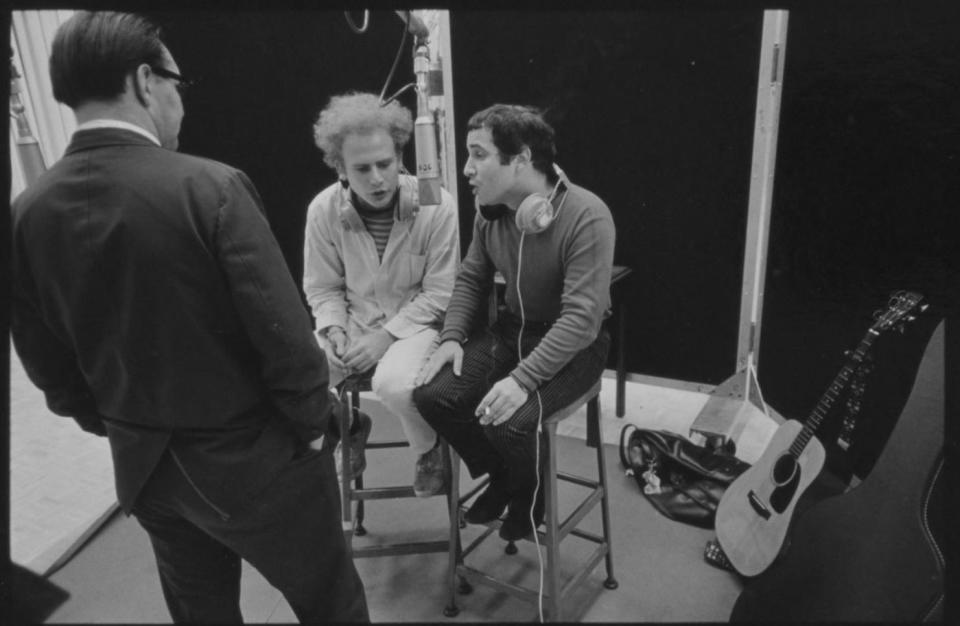
Even “Mrs. Robinson,” the perky ditty composed for the 1967 film “The Graduate,” has a fun backstory. In a TV talk-show clip, Simon recounts how many of the lyrics were made up on the spot once it was determined the song would be used for a chase scene. Simon recreates the moment as he noodles on his guitar.
Gibney also points to footage of the jam sessions during the recording of “Graceland” in Johannesburg as an indicator of Simon’s ability to create “musical crosscurrents.
“He was writing in a different way, in that he would record and integrate it into a larger vision rather than starting with a guitar and a notebook. He was coming from a different place, musically,” Gibney says.
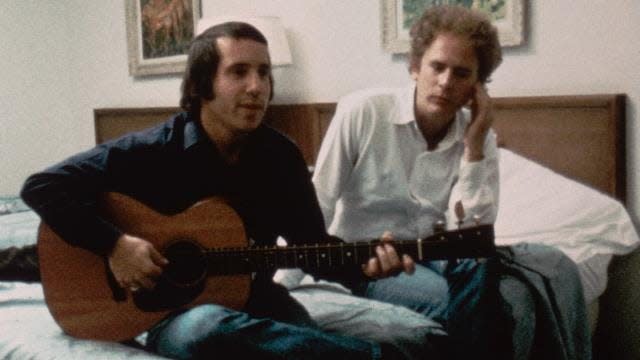
Art Garfunkel declined to participate, but is still heard
Gibney says Garfunkel declined to be interviewed for the film. But Gibney was determined to include his voice, so he relied on archival interview clips with Simon’s former musical partner, who added irrefutable vocal beauty to classics including “Homeward Bound,” “The Boxer” and “The Sound of Silence.”
After the duo split in 1970, Garfunkel terms it “an uneven partnership” because Simon wrote all the songs. “We were best friends until ‘Bridge Over Troubled Water’ … but it began to be abrasive to be forced together,” he says in the old footage.
Gibney notes that it was important to him to present both sides of the pair’s relationship, because “It takes two sides to break up.”
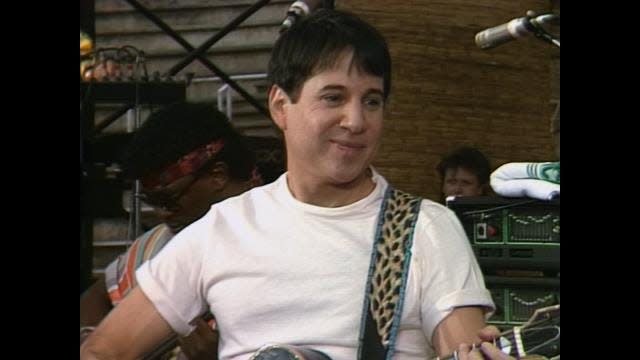
Paul Simon’s hearing problems unfold in real time
While recording “Seven Psalms,” Simon is suddenly afflicted with a serious hearing problem. He complains about the sound being distorted when he puts on his headphones and is visibly frustrated.
Gibney says watching the problem unfold was “very poignant and powerful. To see one of the great songwriters of all time struggling with a key element of his skill … it was very poignant that he let us in while that was happening and he was in a vulnerable stage.”
In the film, Simon is granted some relief through the use of a mouthpiece that focuses on frequencies.
Simon also acquiesces to the reality of the situation: “Maybe we’re supposed to have an obstacle to give you insight into what you’re doing,” he says.
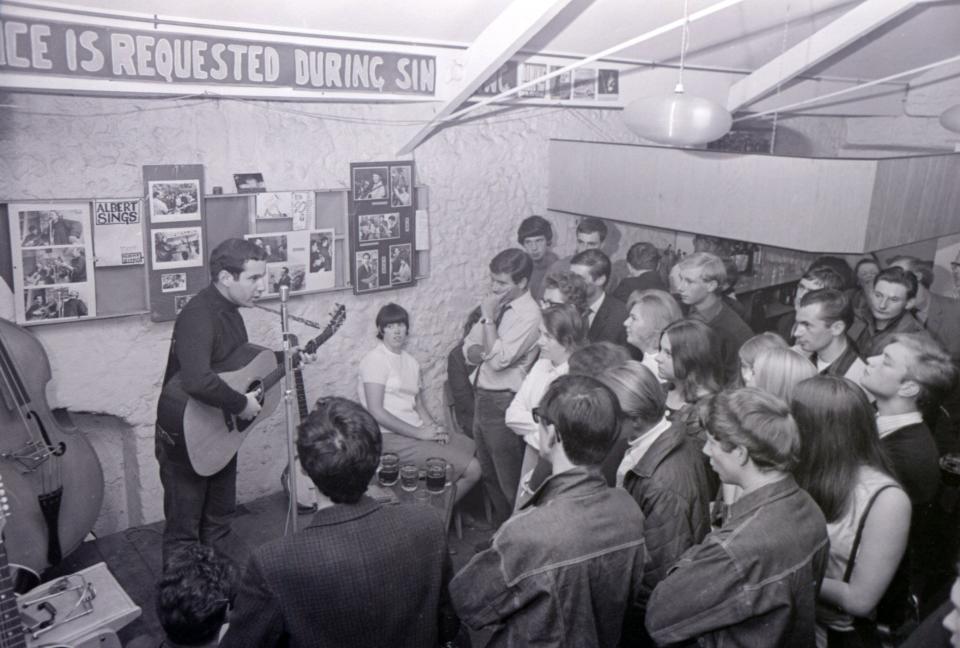
Paul Simon as seen by Wynton Marsalis, Edie Brickell
Gibney didn’t want to turn the film into a parade of talking heads espousing Simon’s greatness, but he did seek observations from a trio of people closest to him: wife Edie Brickell, fellow musician Wynton Marsalis and “Saturday Night Live” impresario Lorne Michaels, who tapped Simon as the first person to both host and perform as the musical guest in 1975, the year it premiered.
In the documentary, Marsalis is greeted with a warm hug from Simon and the pair immediately engages in deep conversation. Marsalis recalls their meeting at a 2002 benefit concert and a decade later, performing together at the Jazz at Lincoln Center series.
Marsalis also reels off a lengthy list of topics that the two frequently discuss, including the Bible and mysticism, leaving little doubt that they have more than musical genius in common. “I couldn’t believe he could come up with that list off the top of his head,” Gibney says with an incredulous laugh. “You can imagine the conversations they’ve had.”
Gibney also spent time with Simon and Brickell at their compound in Wimberley, Texas.
“She’s a really lovely person,” Gibney says. “She really grounds Paul and is a great musician in her own right. You can tell this magic in their relationship.”
In the film, Simon, sporting a flannel shirt and faded red baseball cap, with glasses dangling from his neck, greets Brickell with, “Hey, beautiful.”
She later provides perhaps the most succinct, thoughtful insight into Simon as a man and a musician. “Paul has a way of looking at everyday life and making it poetic,” she says. “But that also makes him misunderstood.”
This article originally appeared on USA TODAY: 'In Restless Dreams': Paul Simon documentary highlights, Art Garfunkel
